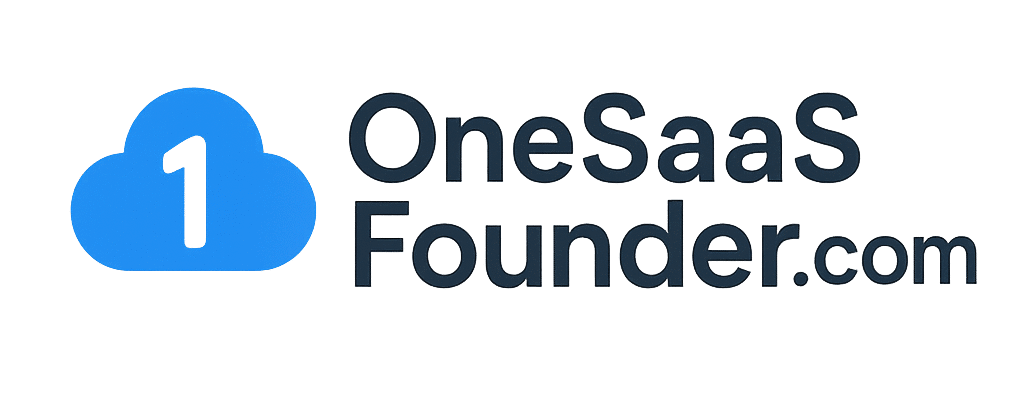How to Build a SaaS as a Solo Founder in 2025 (Step-by-Step Guide)
Introduction
Building a SaaS company used to feel impossible without a team, funding, or Silicon Valley connections. But in 2025, solo founders are proving otherwise.
Armed with no-code tools, AI assistants, and lean startup methods, one-person companies are creating profitable SaaS products faster than ever. In fact, some micro-SaaS founders are generating $10K–$50K/month working entirely on their own.
If you’ve been dreaming about starting your own SaaS but don’t know where to begin — this guide will give you a step-by-step roadmap to validate, build, and launch a SaaS product as a solo founder.
Step 1: Validate Your SaaS Idea
The biggest mistake new founders make? Jumping into coding before validating demand. You don’t need a product yet — you need proof that someone cares enough to pay.
Ways to validate:
Communities: Browse Indie Hackers, Reddit (r/SaaS, r/startups), and LinkedIn groups. Look for problems people complain about.
Landing Pages: Use Carrd or Webflow to create a simple “coming soon” page. Add an email signup form and track interest.
Pre-Sell: Offer early-bird pricing or lifetime deals before you build. Gumroad or LemonSqueezy make this easy.
💡 Pro Tip: If you can’t get at least 10–20 people to commit to paying, rework your idea.
Step 2: Choose the Right Tech Stack (or Go No-Code)
You don’t need to be a full-stack developer to launch SaaS in 2025. Thanks to no-code platforms and AI-assisted coding, solo founders can get to market fast.
Non-technical founders:
Bubble → drag & drop web apps.
Glide → mobile-first SaaS.
Softr + Airtable → quick SaaS MVPs.
Technical founders:
MERN (MongoDB, Express, React, Node) → scalable web apps.
Django or Ruby on Rails → fast backend development.
WordPress + WP Ultimo → SaaS-style subscription platforms.
AI coding assistants:
GitHub Copilot, Cursor, and ChatGPT help speed up development.
Step 3: Build a Minimum Viable Product (MVP)
Keep it lean. Your MVP should solve one core pain point well. Remember: Calendly started as just a simple scheduling tool.
Steps to build an MVP:
Define your single most important feature.
Create mockups in Figma.
Use no-code tools or code + AI to ship the simplest working version.
Launch early — don’t wait for “perfect.”
Tools to help: Figma (design), Notion (roadmap), Zapier (automation).
Step 4: Set Up SaaS Infrastructure
A working product is only half the battle — you need infrastructure to run your SaaS smoothly.
Hosting: Vercel (for React/Next apps), AWS, or DigitalOcean.
Payments: Stripe (global standard), Paddle (handles VAT for EU/UK founders).
Authentication: Firebase Auth, Supabase, or Auth0.
Support: Crisp, Tawk.to, or Intercom for customer chat.
Step 5: Marketing as a Solo Founder
Without a marketing team, how do you get users? By building in public and using low-cost growth hacks.
Tactics:
Build in Public: Share your journey on X (Twitter), Indie Hackers, and LinkedIn. Transparency builds trust.
SEO Content: Write blog posts about the problem your SaaS solves.
Communities: Engage in niche Slack, Discord, or Reddit groups. Offer value before promoting.
Launch Platforms: Submit on Product Hunt, BetaList, and Hacker News.
💡 Pro Tip: Collect emails from day one. A 500-person mailing list is worth more than 5,000 random website visitors.
Step 6: Monetisation & Pricing Models
You don’t need venture capital — a solo SaaS works best when bootstrapped with recurring revenue.
Popular pricing models:
Freemium: Free tier + paid upgrade.
Paid-only: Flat monthly/annual subscription.
Lifetime Deal: One-time payment for early adopters.
For micro-SaaS, $10–$49/month is the sweet spot. Start low → raise prices as you add features.
Step 7: Automate & Scale Without a Team
As a one-person founder, automation is your co-founder.
Onboarding: Use email sequences via MailerLite or ConvertKit.
Customer Support: Set up AI chatbots + FAQ pages.
Billing & Invoicing: Automate with Stripe + Paddle.
Workflows: Use Zapier or Make to connect apps.
💡 Outsource small tasks (design, copy, bug fixes) on Fiverr or Upwork.
Step 8: Measure, Improve, Repeat
SaaS is not “set it and forget it.” Track key metrics:
MRR (Monthly Recurring Revenue)
Churn Rate (customer drop-off)
CAC (Customer Acquisition Cost)
LTV (Customer Lifetime Value)
Use customer feedback loops to iterate. As you grow, you can stay solo or hire freelancers/contractors.
Conclusion
In 2025, being a solo SaaS founder is no longer a dream — it’s a proven path. With AI, no-code, and automation, one person can now build, market, and scale a SaaS product globally.
If you’ve been waiting for the “right time,” this is it. Start small, validate fast, launch lean, and let automation work for you.
✨ Remember: The best SaaS companies often start with just one founder and one idea.
👉 Subscribe to One SaaS Founder for weekly guides, case studies, and founder resources to help you build smarter, not harder.

